-
Product Name
RCC1 Polyclonal Antibody
- Documents
-
Description
Polyclonal antibody to RCC1
-
Tested applications
WB, IHC, IF
-
Species reactivity
Human, Mouse, Rat
-
Alternative names
RCC1 antibody; CHC1 antibody; RCC1-I antibody; SNHG3-RCC1 antibody; regulator of chromosome condensation antibody
-
Isotype
Rabbit IgG
-
Preparation
Antigen: Recombinant fusion protein containing a sequence corresponding to amino acids 1-240 of human RCC1 (NP_001260.1).
-
Clonality
Polyclonal
-
Formulation
PBS with 0.02% sodium azide, 50% glycerol, pH7.3.
-
Storage instructions
Store at -20℃. Avoid freeze / thaw cycles.
-
Applications
WB 1:1000 - 1:2000
IHC 1:50 - 1:200
IF 1:50 - 1:200 -
Validations
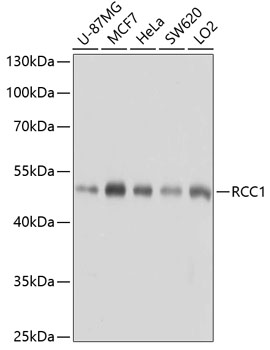
Western blot - RCC1 Polyclonal Antibody
Western blot analysis of extracts of various cell lines, using RCC1 antibody at 1:1000 dilution.Secondary antibody: HRP Goat Anti-Rabbit IgG (H+L) at 1:10000 dilution.Lysates/proteins: 25ug per lane.Blocking buffer: 3% nonfat dry milk in TBST.Detection: ECL Basic Kit .Exposure time: 5s.
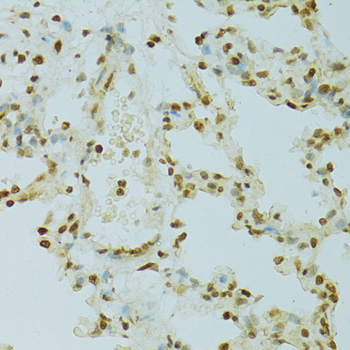
Immunohistochemistry - RCC1 Polyclonal Antibody
Immunohistochemistry of paraffin-embedded rat lung using RCC1 antibody at dilution of 1:100 (40x lens).
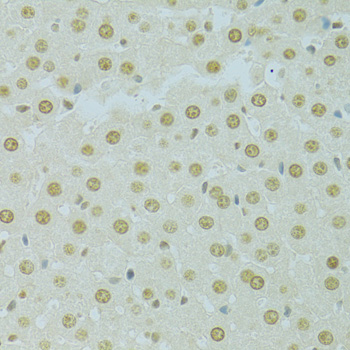
Immunohistochemistry - RCC1 Polyclonal Antibody
Immunohistochemistry of paraffin-embedded rat liver using RCC1 antibody at dilution of 1:100 (40x lens).
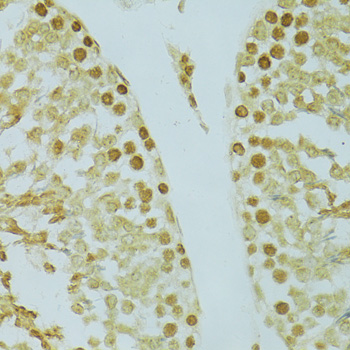
Immunohistochemistry - RCC1 Polyclonal Antibody
Immunohistochemistry of paraffin-embedded rat testis using RCC1 antibody at dilution of 1:100 (40x lens).
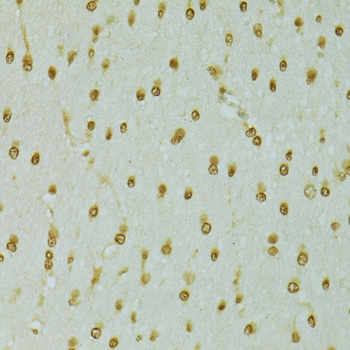
Immunohistochemistry - RCC1 Polyclonal Antibody
Immunohistochemistry of paraffin-embedded rat brain using RCC1 antibody at dilution of 1:100 (40x lens).
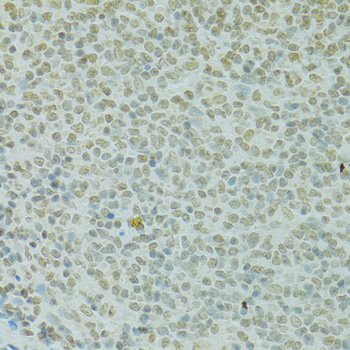
Immunohistochemistry - RCC1 Polyclonal Antibody
Immunohistochemistry of paraffin-embedded rat spleen using RCC1 antibody at dilution of 1:100 (40x lens).
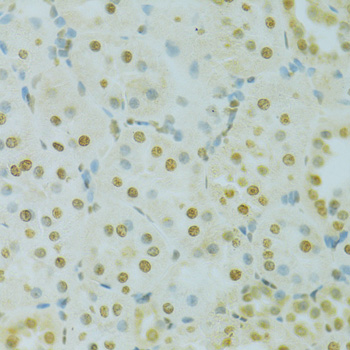
Immunohistochemistry - RCC1 Polyclonal Antibody
Immunohistochemistry of paraffin-embedded rat kidney using RCC1 antibody at dilution of 1:100 (40x lens).
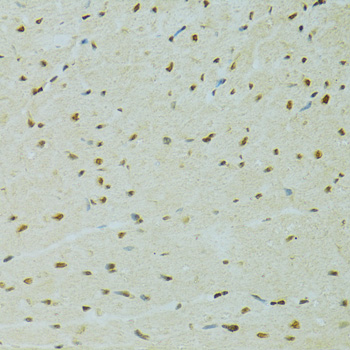
Immunohistochemistry - RCC1 Polyclonal Antibody
Immunohistochemistry of paraffin-embedded rat heart using RCC1 antibody at dilution of 1:100 (40x lens).
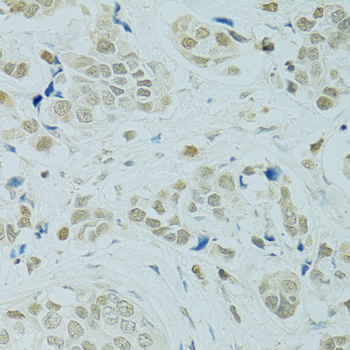
Immunohistochemistry - RCC1 Polyclonal Antibody
Immunohistochemistry of paraffin-embedded human breast cancer using RCC1 antibody at dilution of 1:100 (40x lens).
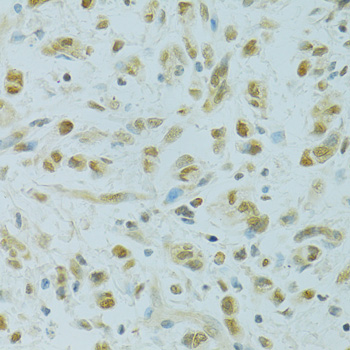
Immunohistochemistry - RCC1 Polyclonal Antibody
Immunohistochemistry of paraffin-embedded human gastric cancer using RCC1 antibody at dilution of 1:100 (40x lens).
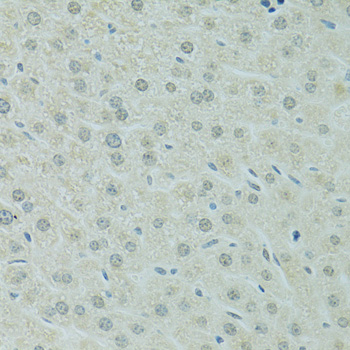
Immunohistochemistry - RCC1 Polyclonal Antibody
Immunohistochemistry of paraffin-embedded mouse liver using RCC1 antibody at dilution of 1:100 (40x lens).
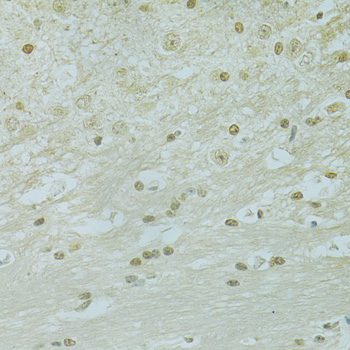
Immunohistochemistry - RCC1 Polyclonal Antibody
Immunohistochemistry of paraffin-embedded mouse brain using RCC1 antibody at dilution of 1:100 (40x lens).
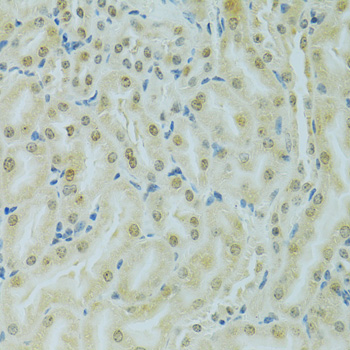
Immunohistochemistry - RCC1 Polyclonal Antibody
Immunohistochemistry of paraffin-embedded mouse kidney using RCC1 antibody at dilution of 1:100 (40x lens).
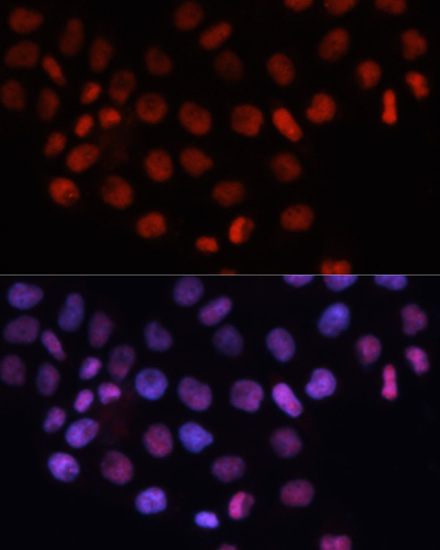
Immunofluorescence - RCC1 Polyclonal Antibody
Immunofluorescence analysis of HeLa cells using RCC1 antibody at dilution of 1:100. Blue: DAPI for nuclear staining.
-
Background
Guanine-nucleotide releasing factor that promotes the exchange of Ran-bound GDP by GTP, and thereby plays an important role in RAN-mediated functions in nuclear import and mitosis. Contributes to the generation of high levels of chromosome-associated, GTP-bound RAN, which is important for mitotic spindle assembly and normal progress through mitosis. Via its role in maintaining high levels of GTP-bound RAN in the nucleus, contributes to the release of cargo proteins from importins after nuclear import. Involved in the regulation of onset of chromosome condensation in the S phase. Binds both to the nucleosomes and double-stranded DNA.
Related Products / Services
Please note: All products are "FOR RESEARCH USE ONLY AND ARE NOT INTENDED FOR DIAGNOSTIC OR THERAPEUTIC USE"
